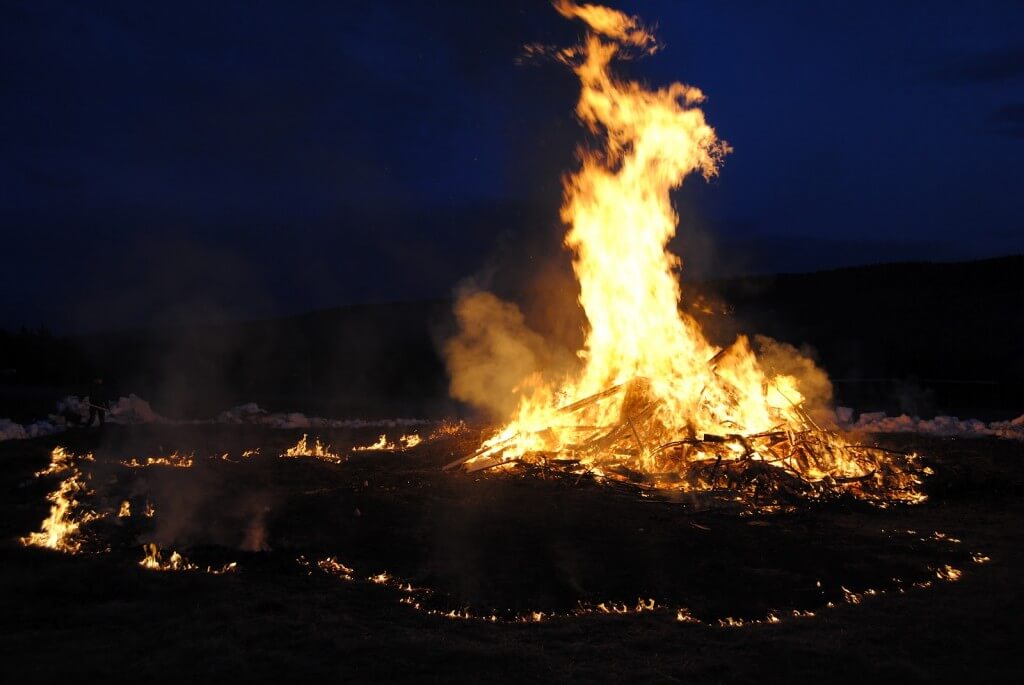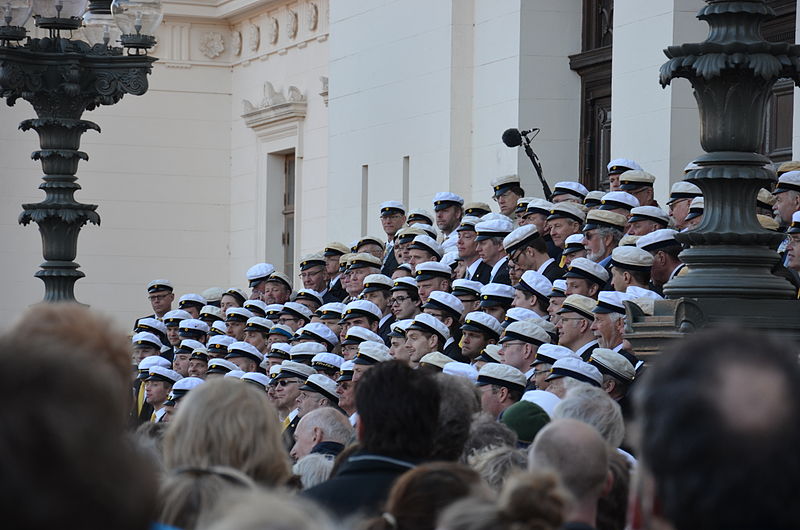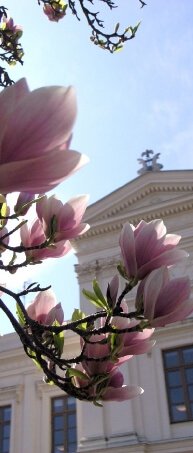| Fat Tuesday | Waffle Day | Easter | Walpurgis Night | Mother’s Day |
| Midsummer | Halloween | Lucia | Christmas |
Celebrating Spring in Sweden
The arrival of spring is celebrated on the night of April 30 in every town and village throughout Sweden. The celebrations always include a prominent person making a speech hailing the Spring, a male choir singing traditional hymns to the Spring, and a huge bonfire. The event is known as Valborgsmässoafton (Eve of Walpurgis Mass), since May 1 is the day of Valborg (Walpurgis).
Why do we celebrate Valborg? The answer is: we don’t. We celebrate spring. Ask any Swede “who was Valborg?” and you will most certainly get an answer like “eh… don’t know… wasn’t that dad’s old aunt or something?” Nobody seems to know why, but Valborgsmässoafton is a traditional night of big celebrations.

So who was Valborg, Wealdburg, Walburg, Walpurga or Walpurgis? Why doesn’t anybody in Sweden know who she was, and why do we burn the sticks and branches that we’ve cleaned out from the garden on Valborgsmässoafton, Walpurgis night? As can be expected by the many different spellings of her name, legends and chronicles about her life are marred by uncertainty, like most writings from this period.
Wealdburg was (probably) born in England in the beginning of the 8th century. She was (probably) the niece of Winfrid (Wynfrith) from Devon who later became archbishop in Mainz, Germany, under the name of (Saint) Bonifacius. She became a nun and worked as a missionary in Germany, performed miracles and wrote a chronicle on Saint Bonifacius. She was canonized on May 1, AD 780, one year after her death, why May 1 is her day in the Roman Catholic calendar.
So, Valborg has no connection to Sweden, and except from the Catholic mass on her day, she has never been commemorated in Sweden. Her name in the calendar is a reminiscence from the Roman Catholic era, which was ended in 1523 AD.
But the fires, and the party? In the 8th century, fierce efforts were made in Germany to eradicate paganism (e.g. by banning horse meat, since horses were often sacrificed – and eaten – on pagan holidays). The origin of the bonfires is that in those old times, Germans let their livestock out to graze in forests and meadows around the spring equinox (in March). When doing so, they used to dance around bonfires and make much noise to scare off wolves and other wild animals; certain quantities of beer were probably involved. The Christian bishops found this feast paganish and wanted it abolished; but instead of forbidding it, they propagated for moving the celebrations to Saint Walpurgis’ day, which eventually turned out to be the same great party, only one month later, in more agreeable weather.
But how did this become a Swedish tradition? Bonfires on Valborgsmässoafton started to appear in Sweden in the late 19th century (i.e. one millenium later), when the habit was introduced by German immigrants in the eastern province of Uppland. Before that, bonfires were common at Easter to scare off witches on the day before Good Friday; this is still a tradition in western Sweden (at least the bonfires – I don’t know about the witches), but making fires on Valborgsmässoafton is common all over the country today. If nothing else, it’s a convenient way to get rid of all the rubbish from the garden.

Photo by Bengt Oberger
While people in most of the country refer to this day with the (ecclesiastical) name that’s written in the calendar, i.e. Valborgsmässoafton, people in the two old university cities Lund and Uppsala know this day as Siste april.
The reason for this is the 200 year old tradition among students to change from the dark winter cap to the white summer cap on May 1st. This occasion had of course to be celebrated for two full days with heavy drinking, starting on Siste april (the last of April) with the dark cap, continuing on Första maj (the first of May) with the white cap. Inclusion of a bonfire to start the celebrations was easy and quite natural.

Pic from lunduniversity.lu.se
In Lund, today’s celebrations include a bonfire, a Spring Ball, a sillfrukost med snaps (breakfast on pickled herring with shot(s) of akvavit), a Spring Concert by a male choir (all students used to be male!), and a speech made by the university’s principal, hailing the spring.
The speech and the concert, held on the stairs leading up to the university’s main building, is a great public event on May 1st, attracting thousands of visitors under the magnificent magnolia trees in front of the building.
You can listen to Lunds Studentsångare (Lund Choral Student Society) in two of the most cherised hymns
here: “Längtan till landet” aka “Vintern rasat ut”
and here: “Vårvindar friska”.
The Swedish Radio company started live broadcasts from the concert already 1922, and the event has also been covered in TV every year since the 60’s. This has of course contributed to the fact that these traditions have spread across the country during the 20th century.
Nowadays, every town and village have their own bonfire, a male choir concert, a prominent person making a speech greeting the spring, and a Spring Ball.
If you don’t plan to attend the ball, you can roast a few hot dogs at the bonfire and have a beer with your friends while the night is falling.
However, most people do not take a snaps for breakfast even on Valborgsmässoafton.
May 1st is a ”red day” in the calendar, i.e. most people are free from work. This is however not in commemoration of Valborg: May 1st is International Workers’ Day, a celebration of the international labour movement. (May 1st is a national holiday in more than 80 countries and unofficially celebrated in many other.)
Comments are closed.